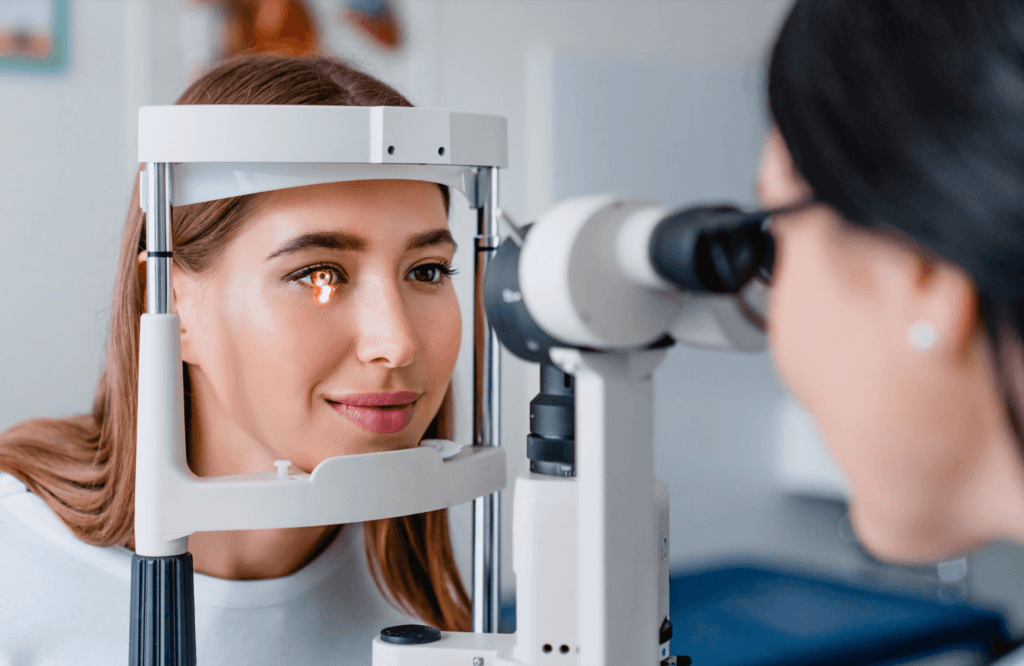Laser Peripheral Iridotomy,Our Team,Precision Surgery Center

Prompt detection and diagnosis are vital for patients with glaucoma because glaucoma does not produce any evident symptoms or signs during its earlier stages. And by the time it makes itself apparent, irreversible vision loss and ocular damage may have occurred. But our experienced team at Precision Surgery Center of Napa Valley is here to help you achieve your best possible outcome and preserve as much of your vision as possible.
We offer numerous effective treatment strategies, including laser peripheral iridotomy. So, contact us as soon as possible to discuss your options with our board-certified ophthalmologists in Napa, CA.
How does laser peripheral iridotomy help glaucoma patients?
Laser peripheral iridotomy (LPI) helps ease the primary cause of glaucoma-based vision loss: optical nerve damage caused by intraocular fluid retention that leads to increased pressure.
It can also guard against a very serious condition, acute angle-closure glaucoma. Also called narrow-angle closure glaucoma, this is a medical emergency, and individuals who experience certain sudden onset symptoms should report to a doctor or emergency room right away. Those immediate-onset symptoms include intense eye pain, severe unilateral eye pain, nausea, vomiting, headache, and visual disturbances such as blurred vision or rainbow halos around lights.
However, some strategies can lower the risk of such an event while reducing the damaging effects of glaucoma and helping preserve your vision and eye health. Among the most potentially effective treatment for many patients is a laser peripheral iridotomy, a low-risk procedure that can significantly reduce the odds of an episode of acute angle-closure glaucoma.
In fact, those with glaucoma can reduce their chances of this sudden onset condition by 66 75% if they seek treatment while their glaucoma is in its early stages. And when it comes to this ocular disorder, early detection and timely treatment are the most effective strategies to stave off vision loss and prevent (as much as possible) the intraocular harm that results from poor drainage and increased pressure within the eye.
What happens during a laser peripheral iridotomy?
Laser peripheral iridotomy at our state-of-the-art Napa practice doesn’t take long at all: it’s an outpatient procedure that only requires a few minutes. And since we administer numbing eye drops, you should feel little to no discomfort.
Our doctors then utilize a laser that efficiently and effectively creates a tiny incision in the iris to help facilitate the draining of the intraocular fluid that’s causing excessive pressure. The procedure is as gentle as it is quick, creating no significant stress.
Since the recovery period is so brief, you’ll be able to resume your daily duties almost immediately after your laser peripheral iridotomy is complete. And to help you enjoy an optimal outcome and manage your condition, we will carefully monitor your recovery, eye health progress, and inner eye pressure when we see you for follow-up visits.
Learn more about laser peripheral iridotomy
Glaucoma is the world’s second-leading cause of blindness. It progressively robs patients of their vision by causing damage to the optic nerve, which cannot regenerate itself. So once the damage has been done, it’s irreversible.
But you can help avert optic nerve harm and enjoy an optimal outcome by getting in touch with our board-certified ophthalmologists at Precision Surgery Center of Napa Valley. A laser peripheral iridotomy and other clinically proven treatment strategies could provide an excellent way to preserve as much of your vision and eye health as possible in Napa, CA.